Contents
SELF-TREATMENT MAY BE HAZARDOUS TO YOUR HEALTH. BEFORE USING ANY HERBS – GET CONSULTATION FROM A DOCTOR!
Description
Aster is a rhizome plant with simple leaf blades. Baskets-inflorescences are part of corymbose or panicle inflorescences. Baskets consist of marginal reed flowers of various colors, as well as central tubular flowers, which are very small and most often have a yellow color.
The aster plant (Aster) is represented by herbaceous annuals and perennials, and it belongs to the family Compositae, or Aster. According to information taken from various sources, this genus unites 200-500 species, with most of them naturally occurring in Central and North America.
Aster story
The plant came to Europe in the 17th century; it was brought secretly from China by a French monk. The name aster from Latin is translated as “star”. There is a Chinese legend about this flower, which says that 2 monks decided to reach the stars, they climbed higher and higher to the highest mountain in Altai, after many days they ended up at the top, but the stars still remained distant and inaccessible.
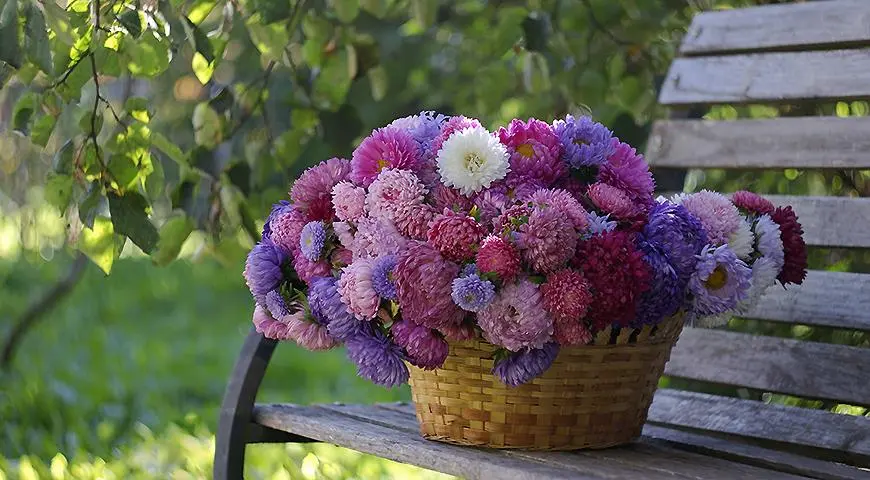
Exhausted by the hard road without food and water, they returned to the foot of the mountain, and a beautiful meadow with wonderful flowers opened up to their eyes. Then one of the monks exclaimed: “Look! We were looking for stars in the sky, and they live on earth! ” Having dug up several bushes, the monks brought them to the monastery and began to grow them, and it was they who gave them the star name “asters”.
Since that time, such flowers in China have been considered a symbol of elegance, charm, beauty and modesty. Aster is a flower of those who were born under the sign of Virgo, a symbol of the dream of the unknown, a guiding star, a talisman, a gift from God to man.
Useful properties of asters
Tataricus aster
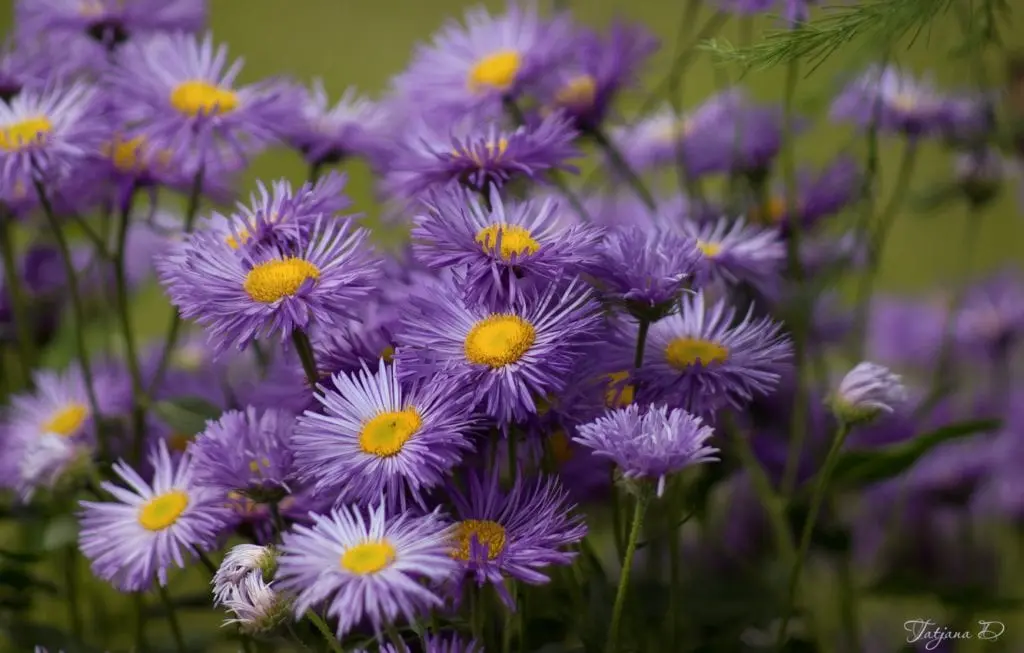
This flowering grass can be seen in meadows, near rivers, on the edges of the Far East and Eastern Siberia. It is easy to recognize by its high (up to one and a half meters) strong, branched stem with small blue or pale pink flowers with a bright yellow center.
All parts of the plant are considered healing. For example, its flowers are rich in flavonoids, the stems and leaves are rich in the antioxidant quercetin, and the roots contain beneficial essential oils. In addition, this herb can be considered a source of carotenoids, triterpenoids, saponins, polyacetylene compounds, and coumarins.
Although the official pharmacology of most countries (except China, Korea, Tibet) does not use this herb as a medicinal herb, in folk medicine the Tatar “star” is known as an antimicrobial, astringent, antiparasitic, diuretic, expectorant and pain reliever.
A decoction of rhizomes is considered useful for asthenia, radiculitis, headache, edema, abscesses in the lungs. Studies have shown that Tartar Aster extract inhibits the growth of Staphylococcus aureus, E. coli and dysentery.
Siberian aster

This is a perennial herb up to 40 cm high, growing in the western and eastern regions of Siberia, in the Far East. The plant usually “lives” in forests, mainly deciduous, and in tall grasses. Recognizable by its elliptical leaves and chamomile-like, blue-violet or almost white flowers with a yellow center. Like other varieties of asters, Siberian is rich in flavonoids, saponins and coumarins. It is useful for the treatment of painful joints, consumption, eczema, stomach ulcers.
Aster Saline
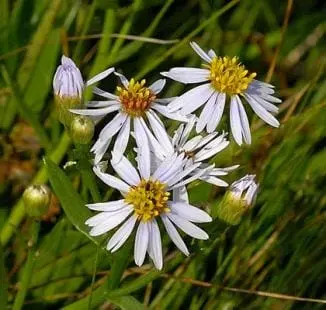
This biennial plant is also known as Tripoli vulgaris. His homeland is the Caucasus, Siberia, the Far East, the European part of the Russian Federation, most of our country. It is a tall, branchy plant (almost 70 cm in height) with lanceolate leaves, bluish or pale pink “baskets” of flowers.
In herbal medicine, inflorescences and plant roots, rich in flavonoids, are used. Preparations from them are useful for the treatment of diseases of the gastrointestinal tract, respiratory system, as well as skin diseases.
Alpine aster
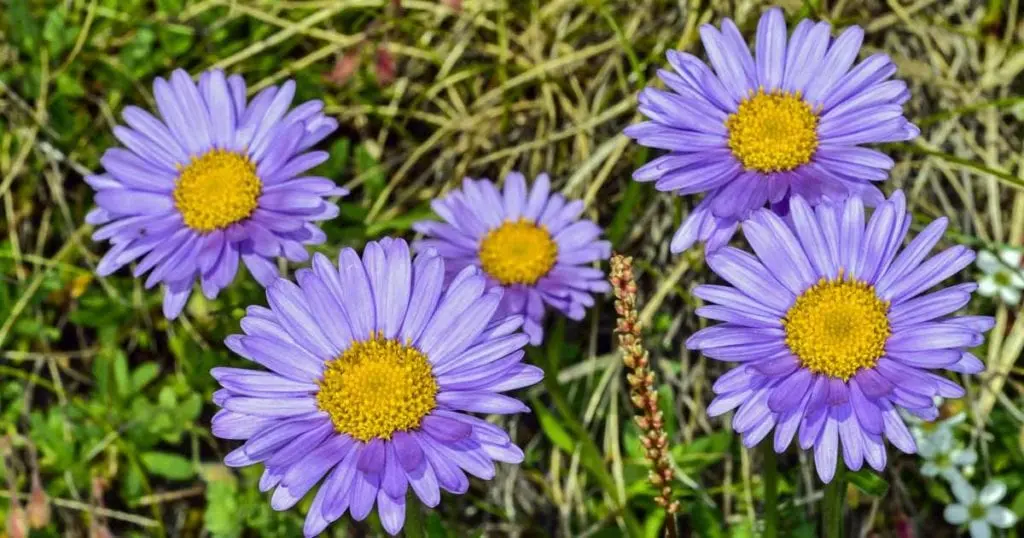
The most popular of the “stars” used in traditional medicine. Preparations from it are used for a wide range of diseases: from ordinary weakness to serious chronic diseases. This herb is considered useful for influenza, gastritis, tuberculosis, colitis, scrofula, bone pain, dermatoses, and other diseases. In Japan, it is known as a means to increase potency.
Steppe aster
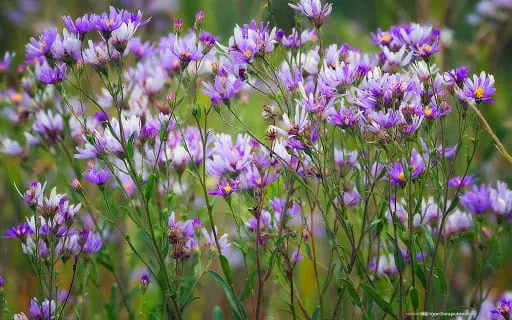
She is also a chamomile aster, wild or European, blue chamomile. Distributed in France, Italy, our country (Transcarpathia), in the southeast of Europe, west of Siberia, in Asia Minor. This is a plant with a high stem (more than half a meter) and large flowers, collected 10-15 in a basket inflorescence.
The herb extract contains alkaloids, rubber, saponins, polyacetylene substances, coumarins. As a medicine, it is useful for nervous disorders, dermatitis, indigestion, pulmonary diseases.
Aster Chinese
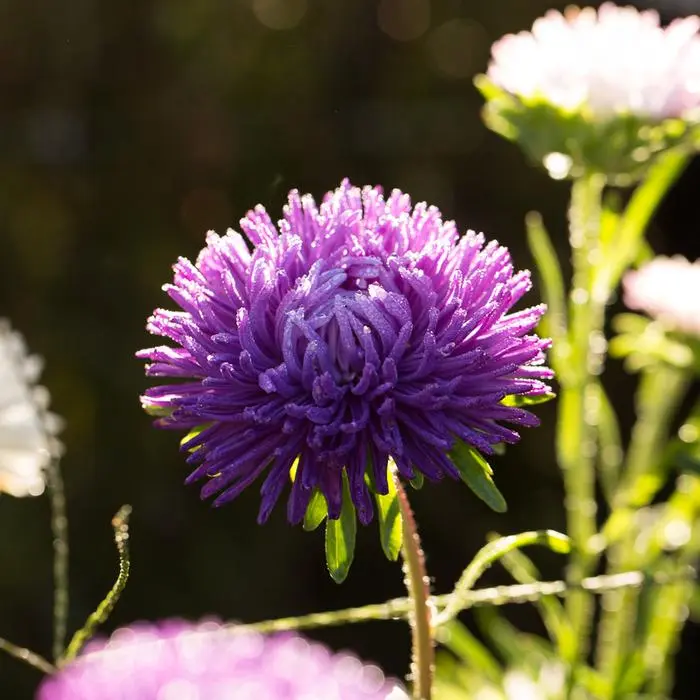
From the point of view of botany, it is not a kind of real asters (although it belongs to the Aster family), but is the only representative of the Callistefus genus. In everyday life, this plant is better known as an annual, garden or Chinese aster.
And it is this one-year-old “star” that is often grown on flower beds and balconies. Only lilac-purple flowers are considered curative. They are used in China and Japan to treat bronchitis, tracheitis, tuberculosis, kidney and liver diseases.
Use in traditional medicine
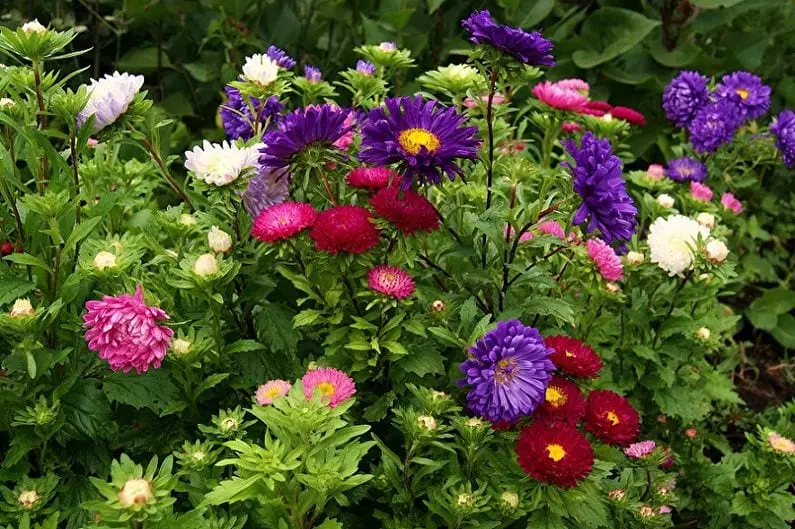
In folk practice, asters have been used for treatment for several centuries. In particular, in China, Korea and Japan, this plant is used for diseases of the heart, kidneys and lungs. The petals are added to salads to improve blood circulation, prevent dizziness and weakness, as a bone-strengthening agent and prevent nervous breakdowns.
Elderly people were advised to take alcoholic tinctures from asters as a general tonic and against aching bones. Previously, before giving birth, a woman was given an infusion of aster petals and honey. They say that this remedy of Tibetan healers has always facilitated childbirth and prevented bleeding.
For the treatment of bronchitis, folk healers used to often use an aqueous infusion of leaves or flowers of a plant (4 teaspoons – a liter of boiling water, leave for an hour). The medicine was drunk in a tablespoon 3-4 times a day.
You can also relieve a dry cough with a decoction of aster roots. To do this, pour 200 ml of boiling water over 1 tablespoon of the chopped root and cook over very low heat for 15 minutes. A chilled drink is taken three times a day, 150 ml.
The infusion from the ground part of the plant is also useful for external use. For example, with furunculosis, all sorts of inflammations on the skin and dermatitis, it is useful to make aster lotions. The medicine is prepared from a tablespoon of dry crushed plants and a glass of hot water. The mixture is boiled for no longer than 3 minutes, then infused for several hours.
How to stock asters
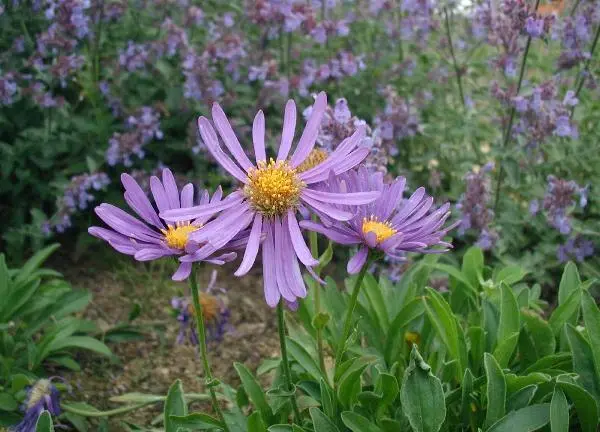
Asters are used in herbal medicine and folk medicine. But in order for the herb to give the desired healing effect, it is important to know when and how to properly harvest the raw materials. Different recipes may require different parts of the plant, so as a rule, herbalists harvest all the parts: flowers, stems, leaves and roots.
Inflorescences are best harvested as soon as they begin to bloom – while the petals are fresh and bright. Then the multi-colored heads are spread in an even layer on paper in a warm place protected from direct sunlight (for example, in the attic or outdoors under a canopy).
During the flowering period, other ground parts of the plant are harvested. They are dried according to the same principle as flowers, but necessarily separately from the inflorescences. The root part of asters is harvested in the fall, when the plant is already beginning to prepare for winter “hibernation”. It is at this time that the maximum amount of nutrients is concentrated in the roots.
Peeled roots can also be dried in a warm place under a canopy or in an electric dryer (but the temperature should not exceed 50 degrees Celsius).
SELF-TREATMENT MAY BE HAZARDOUS TO YOUR HEALTH. BEFORE USING ANY HERBS – GET CONSULTATION FROM A DOCTOR!










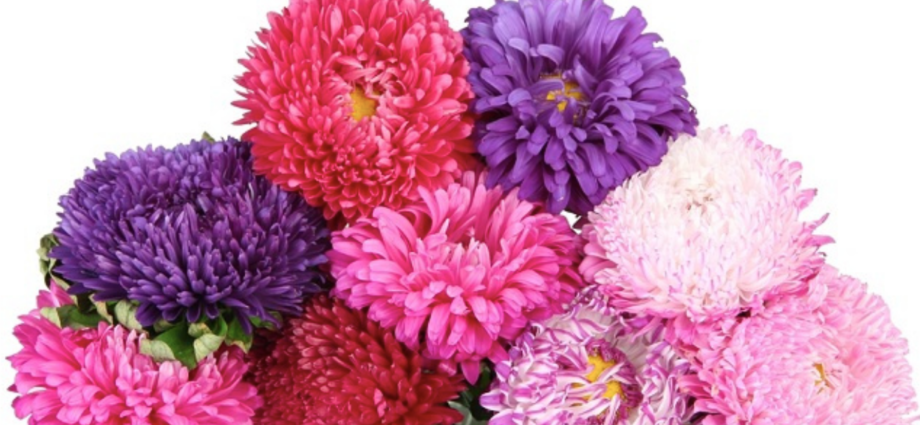
Bonjour
Vous parlez de beaucoup d’asters mais de l’aster lancéolé… Peut-on l’utiliser a des fins médicinales ? Et sous quelles formes ?
Merci